book now
Genoa Historical City Center
Introduction
The city of Genoa has a history that spans over 2,000 years, making it one of the oldest continuously inhabited cities in Europe. Its strategic location along the Mediterranean Sea has played a significant role in its development as a major maritime and trading power. Genoa’s historical city center offers visitors a captivating journey through time, where ancient origins meet medieval grandeur and Renaissance splendor.
Piazza De Ferrari
Piazza De Ferrari serves as the vibrant heart of Genoa, with its iconic fountain and stunning neoclassical architecture. Surrounded by elegant buildings and the prestigious Carlo Felice Opera House, the square is a popular gathering place for locals and visitors alike.
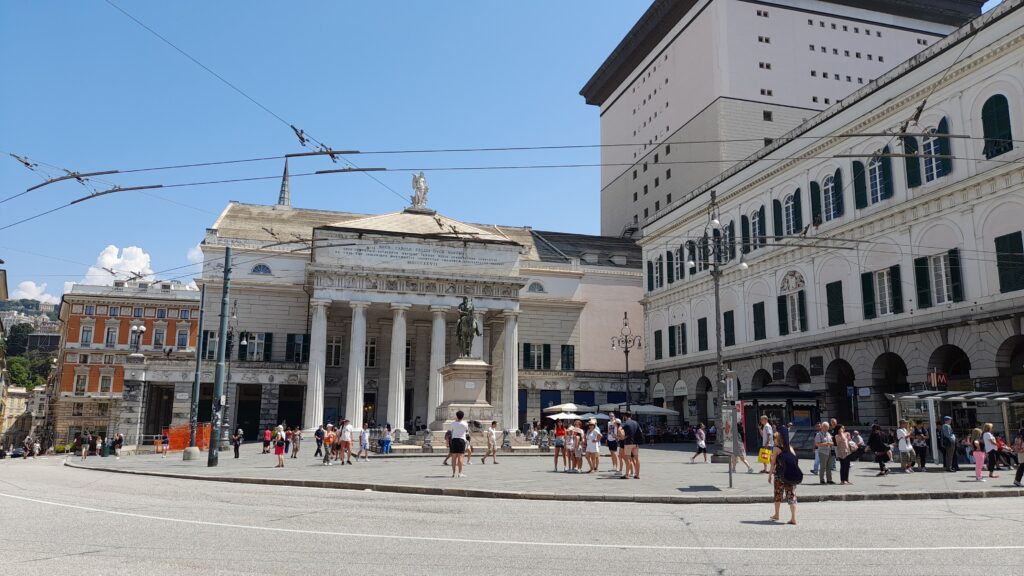
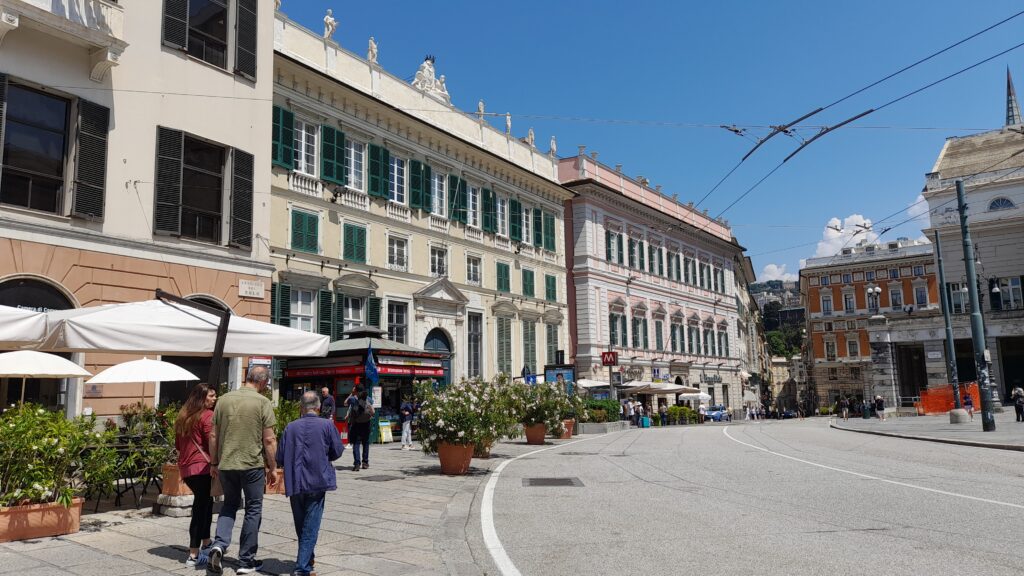

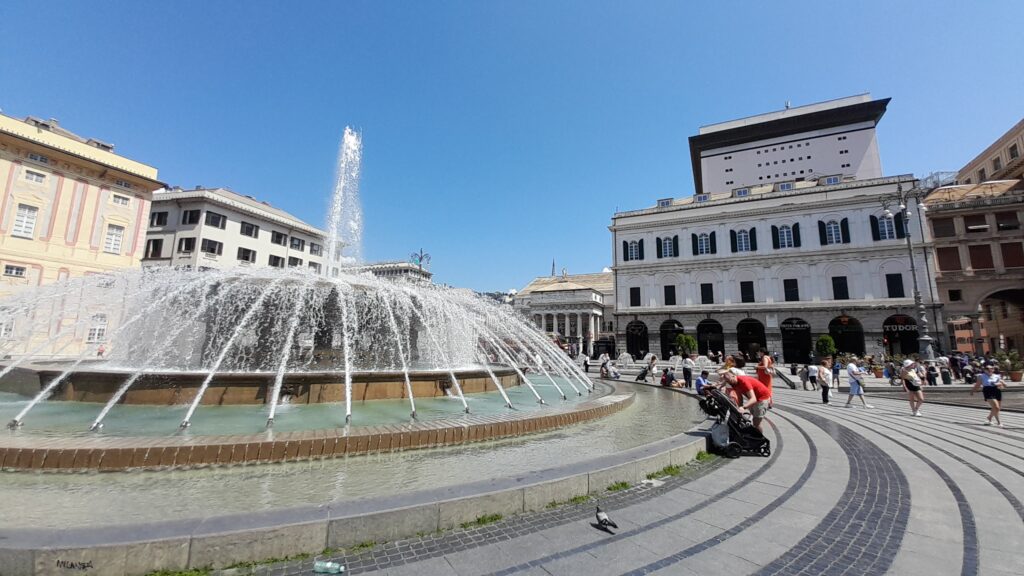

Palazzi dei Rolli
The Palazzi dei Rolli are a collection of splendid palaces that once housed the city’s noble families. These palaces were inscribed on the UNESCO World Heritage list for their outstanding architectural and historical value. Via Garibaldi, lined with these majestic buildings, offers a glimpse into the opulence of Genoa’s golden age.
Piazza Matteotti
Piazza Matteotti, located in the heart of Genoa, is a vibrant and busy square that has historical charm and a lively atmosphere. Named after the prominent Italian politician Giacomo Matteotti, the square serves as a central meeting point and a hub of activity for both locals and visitors. Lined with elegant buildings, cafes, and shops, Piazza Matteotti offers a picturesque setting where the old meets the new. The captivating architecture showcases a blend of styles, ranging from medieval to Renaissance and Baroque, reflecting the city’s rich cultural heritage.
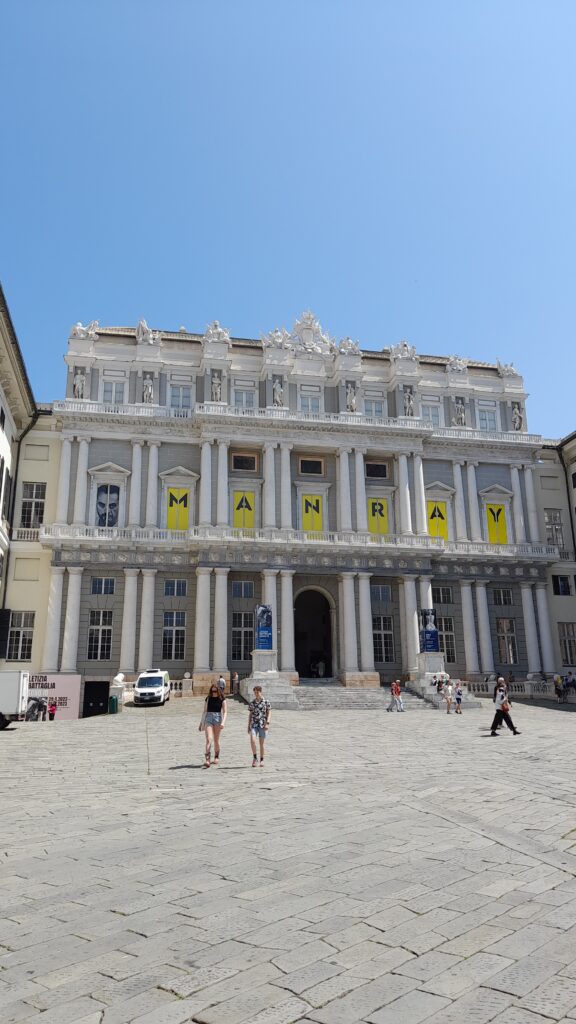

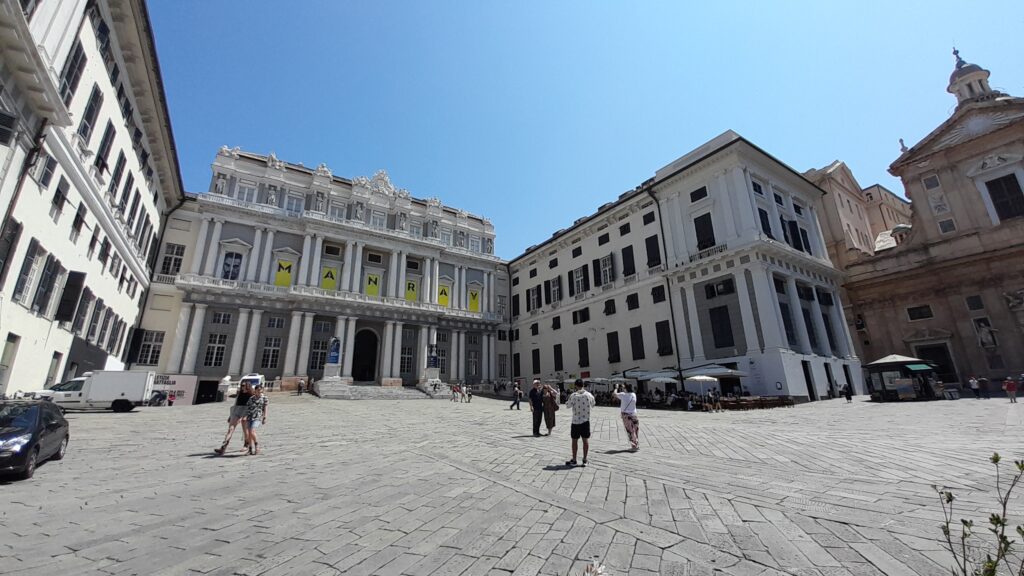


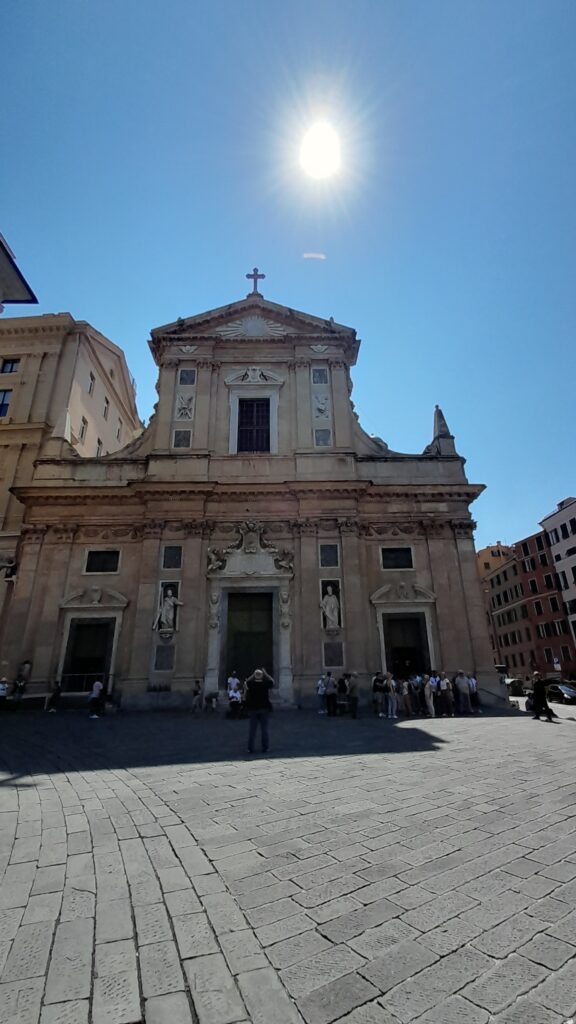

Via Garibaldi
Via Garibaldi, formerly known as Strada Nuova, is a street that embodies the grandeur of Genoa’s Renaissance period. It is home to a cluster of magnificent palaces, including Palazzo Rosso, Palazzo Bianco, and Palazzo Doria-Tursi, which now house art collections and museums.
Via XX Settembre
Via XX Settembre is an iconic street that winds its way through the heart of Genoa. Named in honor of the historic event that unified Italy in 1870, this vibrant avenue is a testament to the city’s rich history, architectural splendor, and commercial activity. Lined with elegant buildings with ornate facades and grandiose entrances, Via XX Settembre showcases a harmonious blend of architectural styles and is home to a wide array of boutiques, shops, cafes, and restaurants. At the end of Via XX Settembre, one is greeted by the breathtaking Piazza De Ferrari.
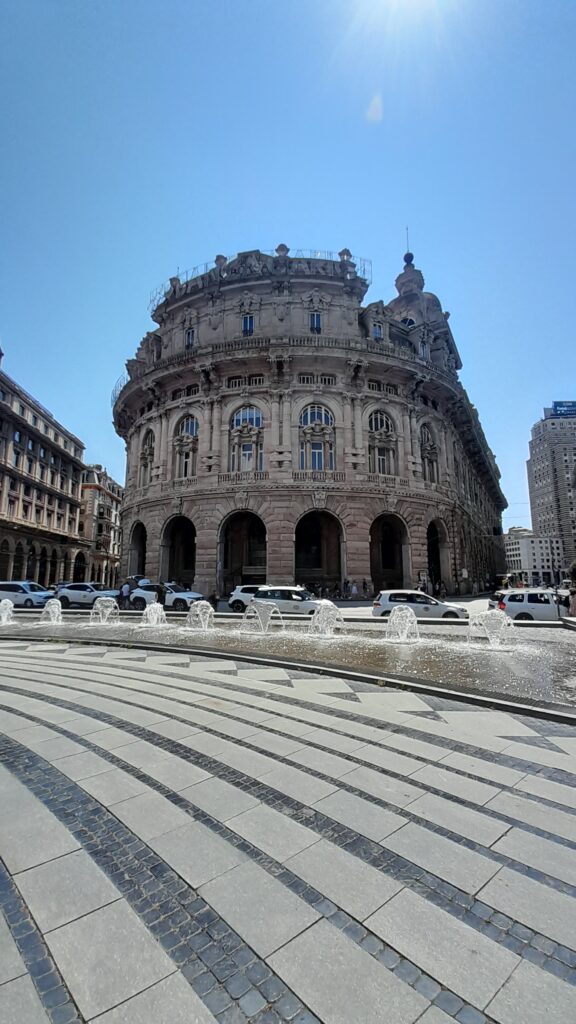

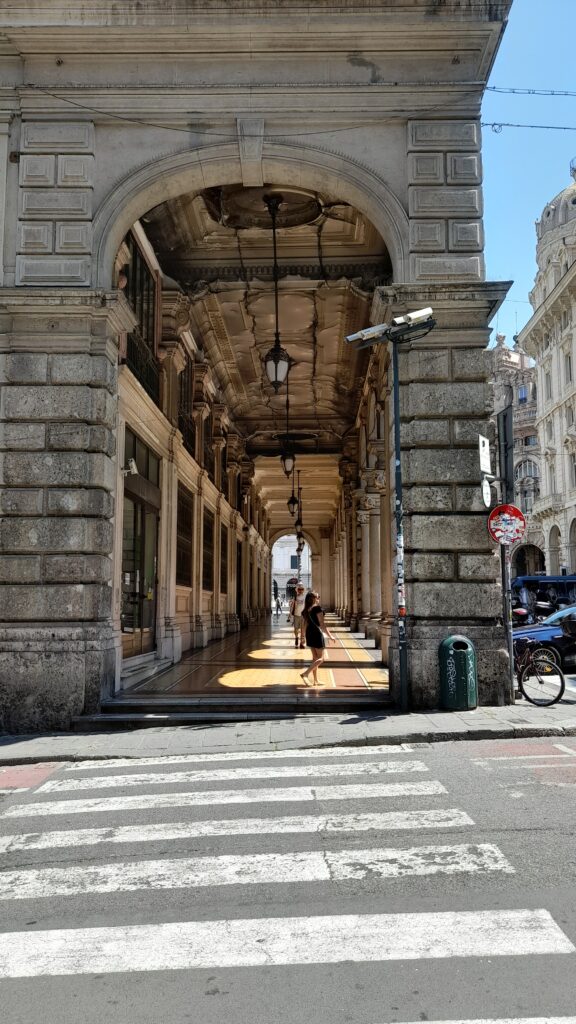

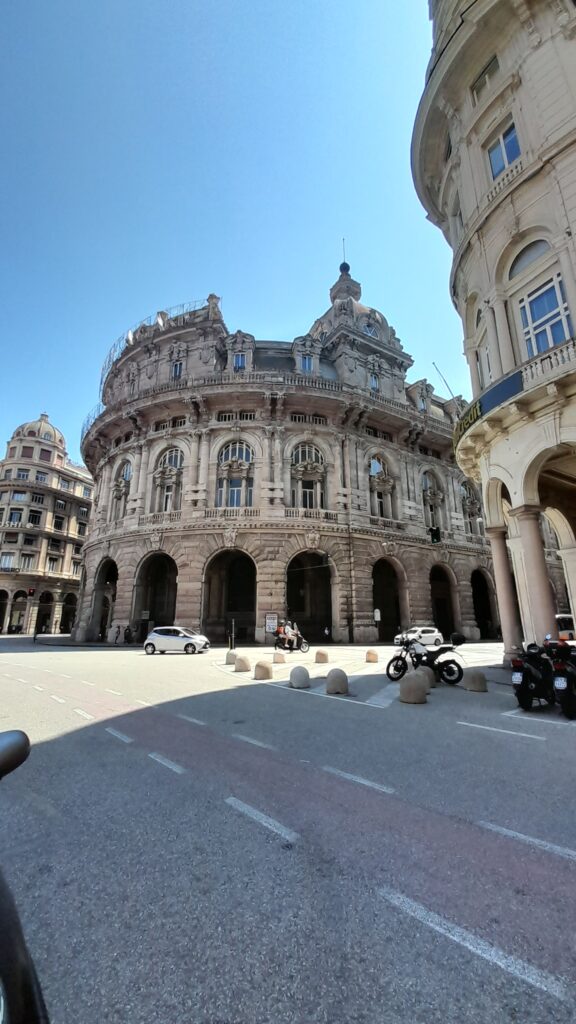

Palazzo di San Giorgio
The Palazzo di San Giorgio in Genoa is a historic landmark that holds great significance in the city’s rich heritage. Built in the 13th century, it stands near the Port of Genoa, overlooking the harbor. Originally constructed as a fortified palace, the Palazzo di San Giorgio later served as a headquarters for the powerful and influential Bank of Saint George, making it one of the oldest financial institutions in the world. Today, the Palazzo di San Giorgio continues to be a cultural landmark, housing a museum that showcases the rich history and heritage of Genoa, while also serving as a venue for various cultural events and exhibitions. Visiting this magnificent palace offers a glimpse into the city’s past, allowing visitors to appreciate its architectural grandeur and the significant role it played in shaping Genoa’s history.
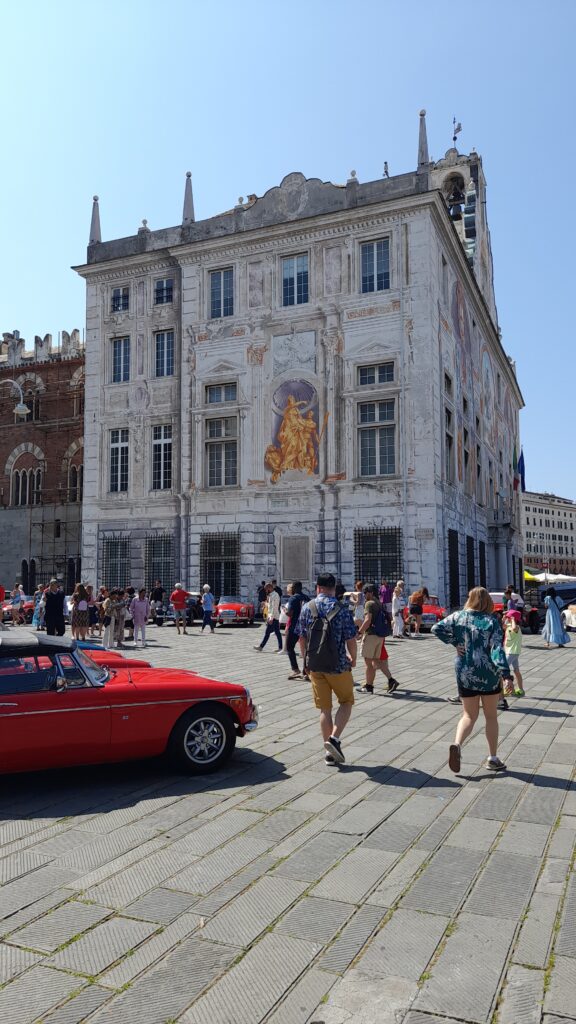

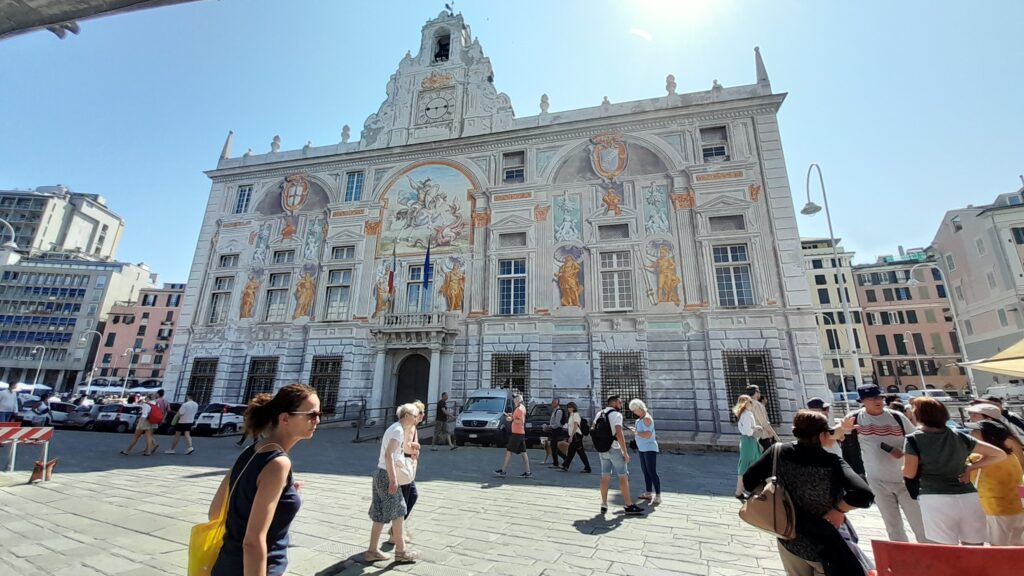

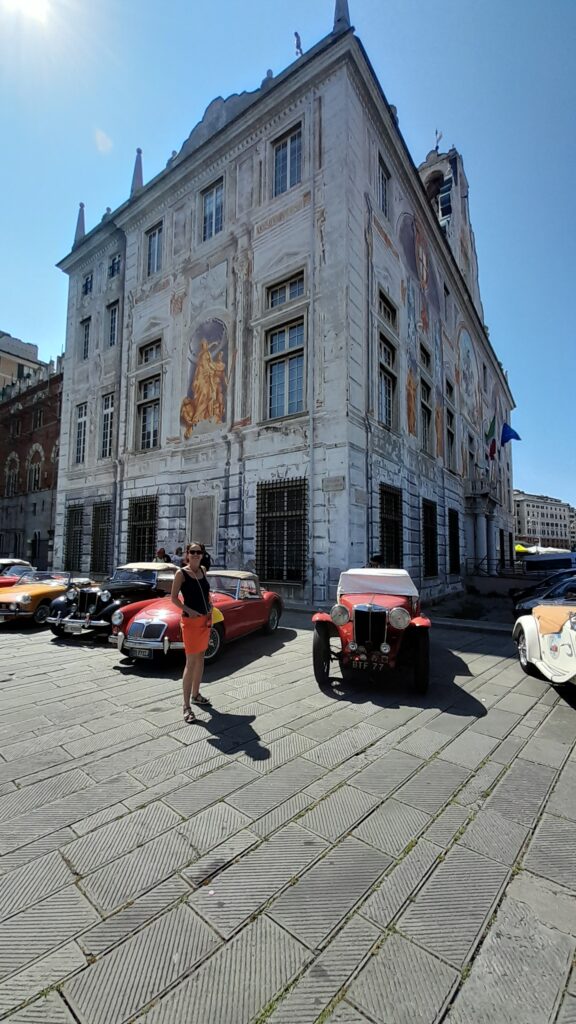

Cattedrale di San Lorenzo
The Cattedrale di San Lorenzo is an impressive Gothic cathedral dating back to the 12th century. Its black-and-white striped façade and intricately designed interiors are awe-inspiring. Visitors can climb to the top of the bell tower for panoramic views of the city.
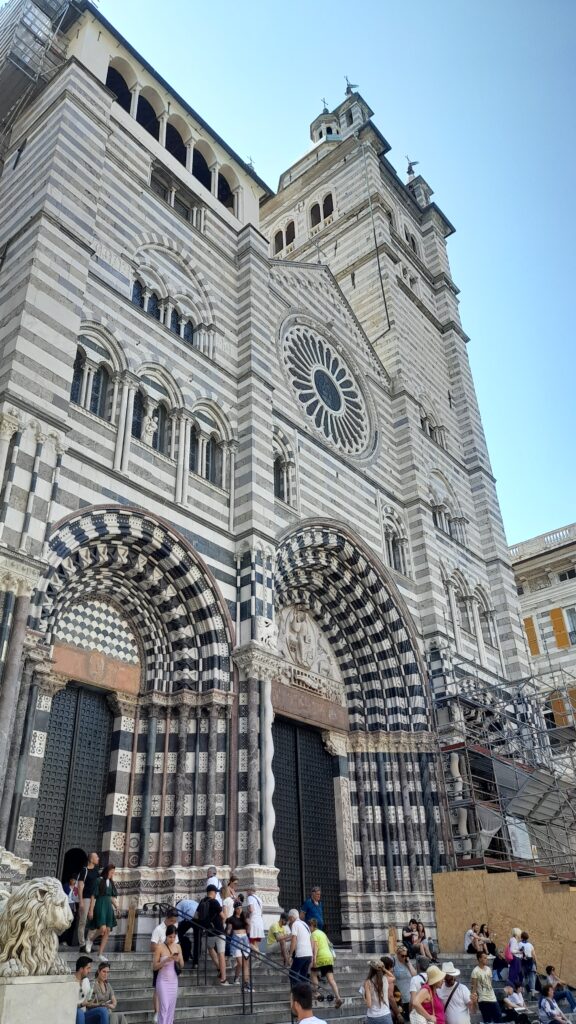

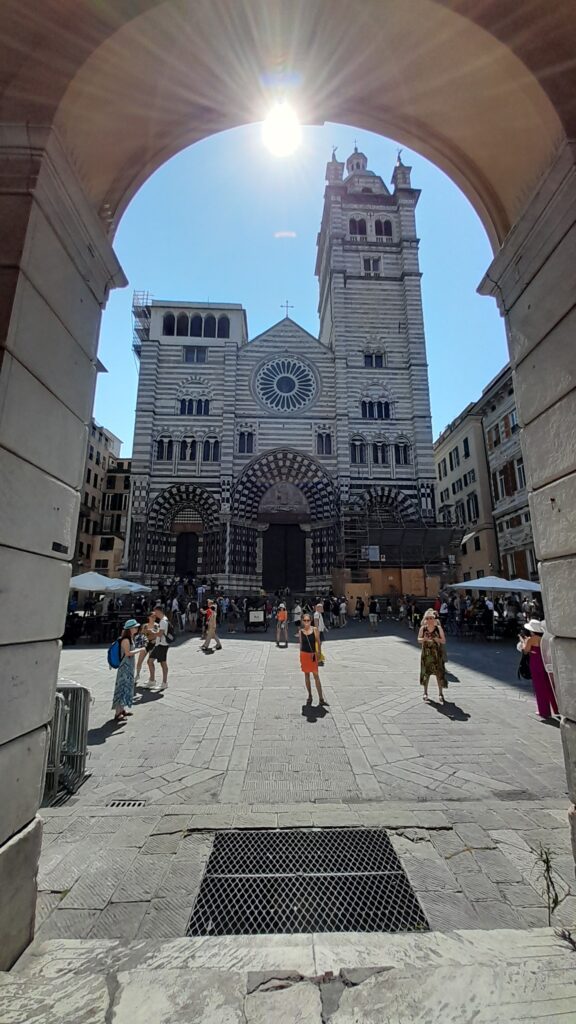

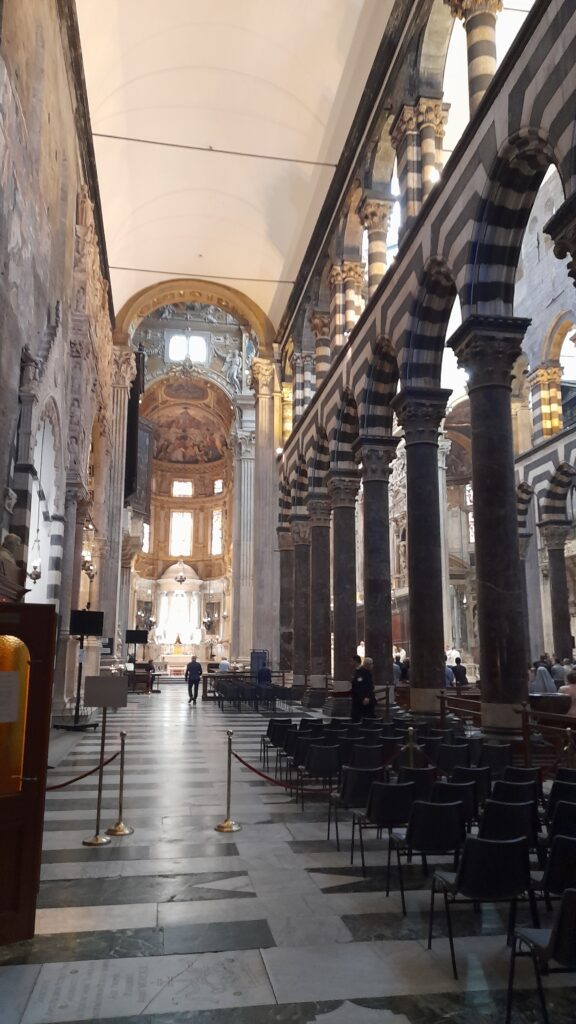

Palazzo Ducale
Palazzo Ducale, or the Doge’s Palace, was the seat of power during the time of the Maritime Republic. This majestic palace features stunning frescoes, grand halls, and beautifully adorned chambers. It now serves as a venue for exhibitions and cultural events.



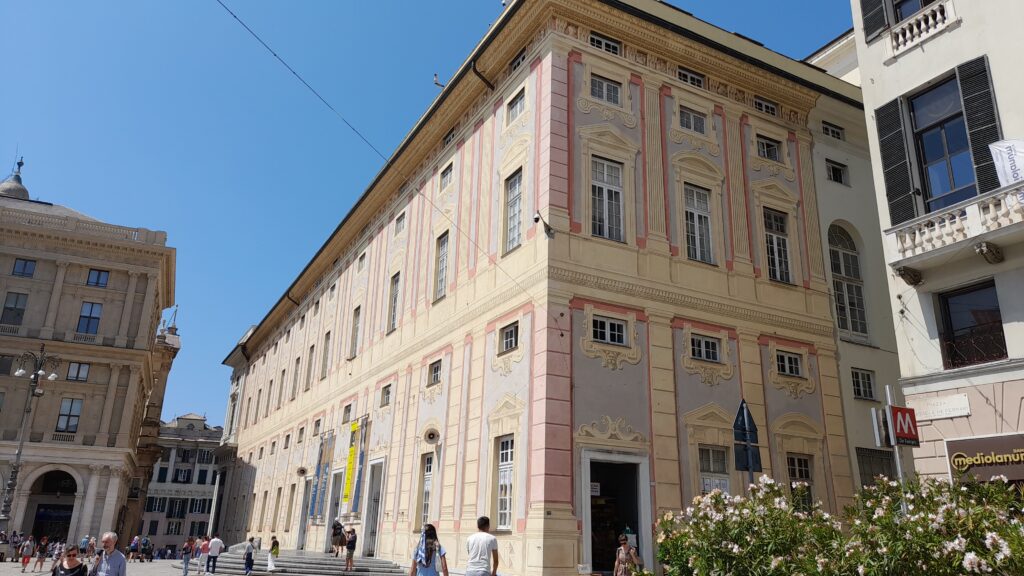

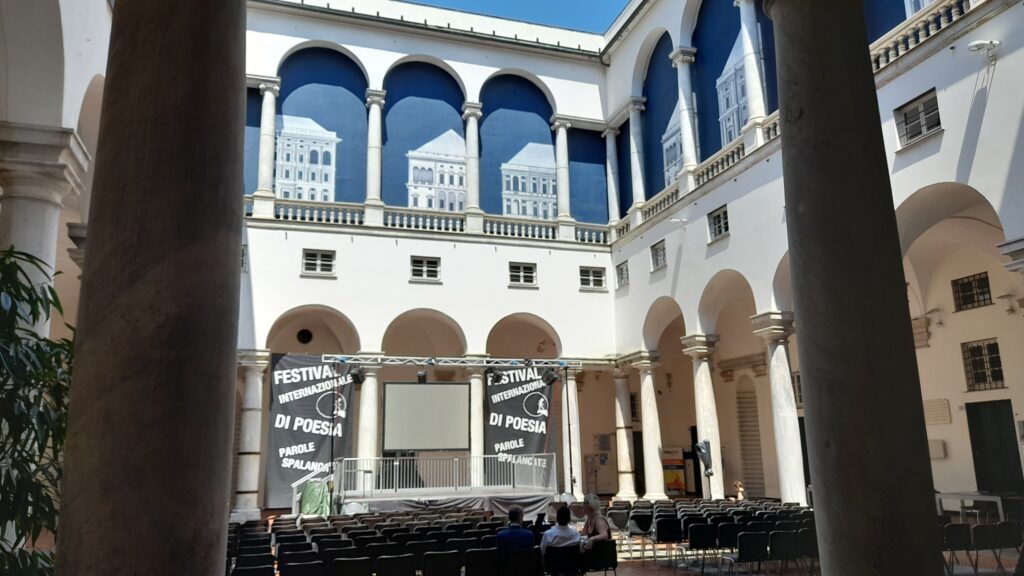

Torri di Porta Soprana
The Torri di Porta Soprana, also known as the Gates of Porta Soprana, consists of two towers and a central archway, which formed the entrance to the city during the Middle Ages. The central archway connects the towers and allows passage through the gate.
The construction of the towers dates back to the 12th century, although the exact year is uncertain. The towers were originally part of the city walls and played a crucial role in defending the city against potential invaders. Over the centuries, Genoa expanded beyond its medieval boundaries, and the city walls were no longer needed for defensive purposes. However, the Torri di Porta Soprana remained as a reminder of Genoa’s rich history.
Today, the Torri di Porta Soprana is open to the public and serves as a historical monument and museum. Visitors can explore the towers and learn about Genoa’s medieval history through exhibits and displays. The site also offers panoramic views of the city from the top of the towers.
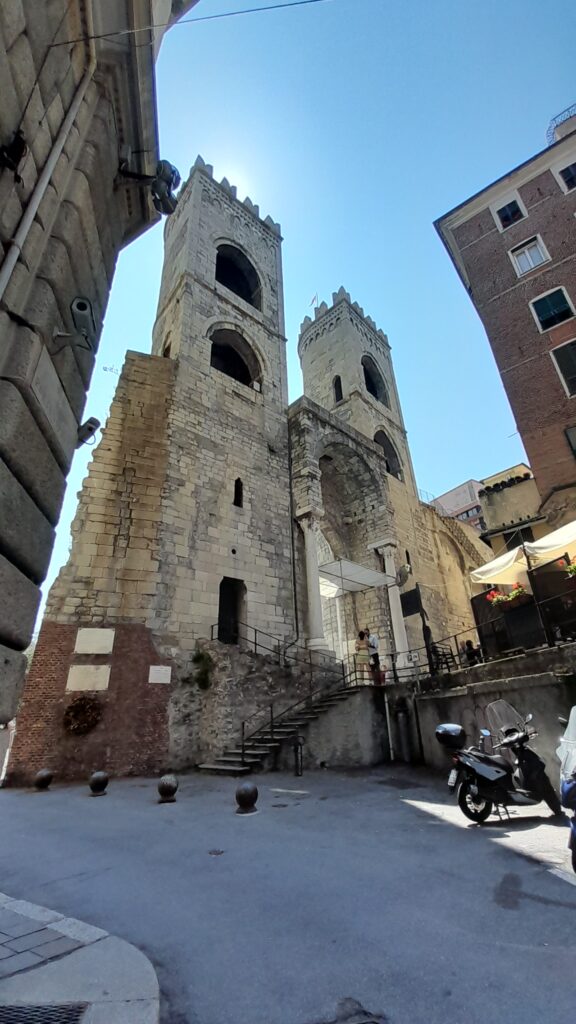

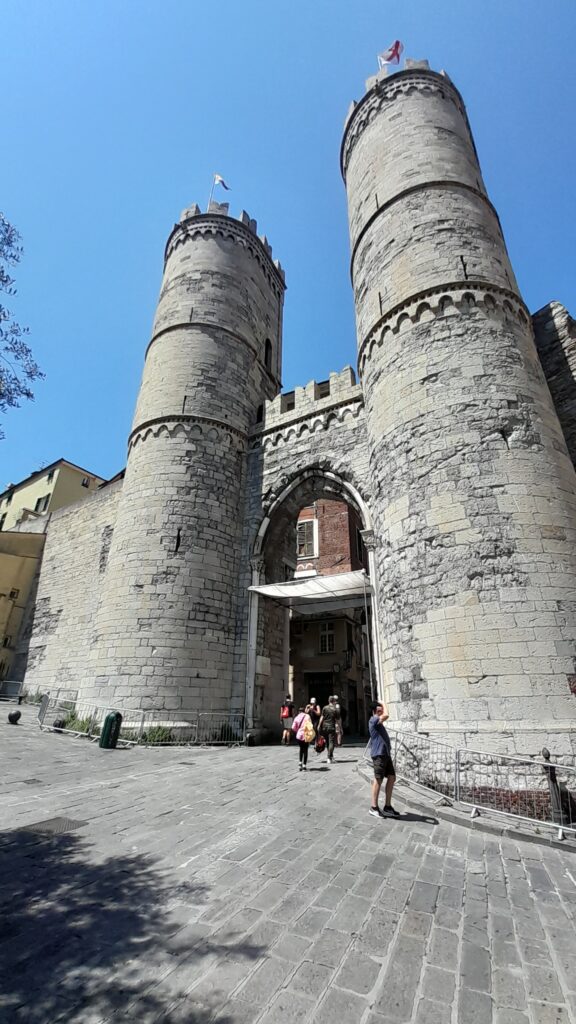

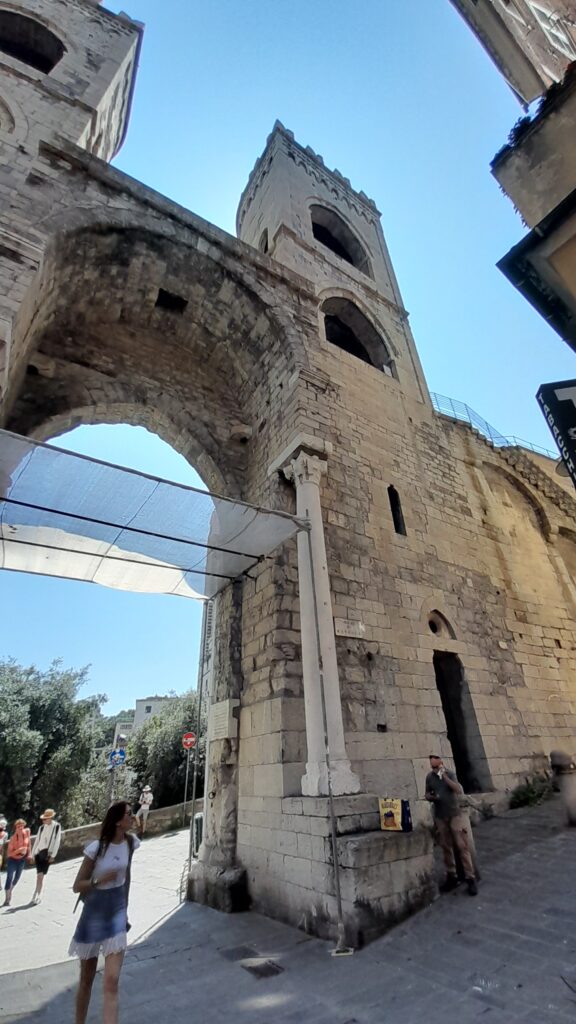

Torre degli Embriaci
The Torre degli Embriaci, also known as the Tower of the Embriaci, is a medieval tower and is one of the prominent landmarks of the city and holds historical significance.
The Torre degli Embriaci is situated near the Porta Soprana, one of the main gateways to the medieval city.
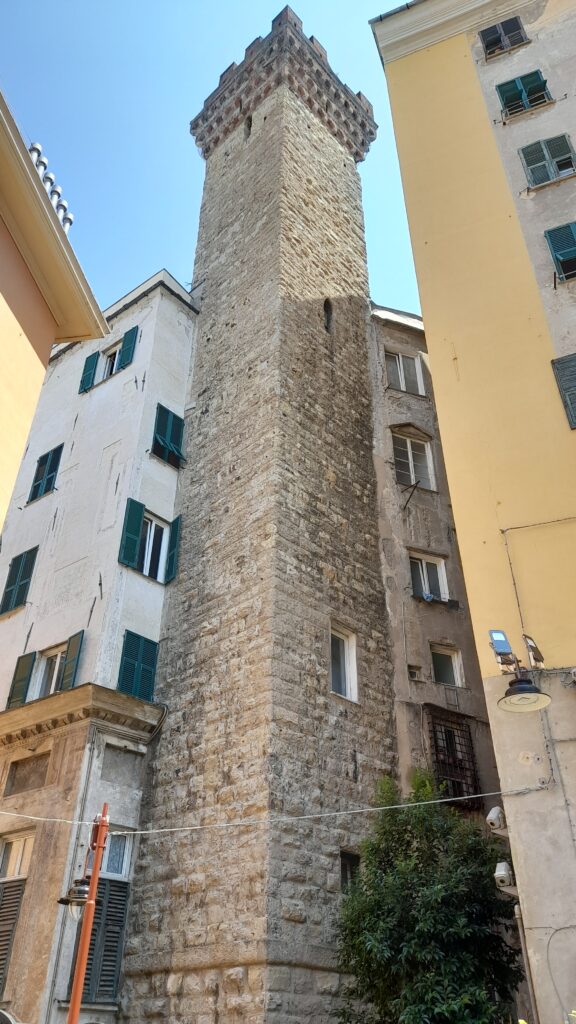

Genoa’s Historic Districts
To truly experience the charm of Genoa, one must wander through its historic districts and intricate network of alleys known as “caruggi.”
Caruggi
The caruggi of Genoa are a labyrinth of narrow streets that wind their way through the historic city center. As you explore these atmospheric alleys, you’ll discover hidden corners, picturesque squares, and small shops selling local delicacies. The caruggi offer a glimpse into the daily life of Genoese people and their vibrant traditions.
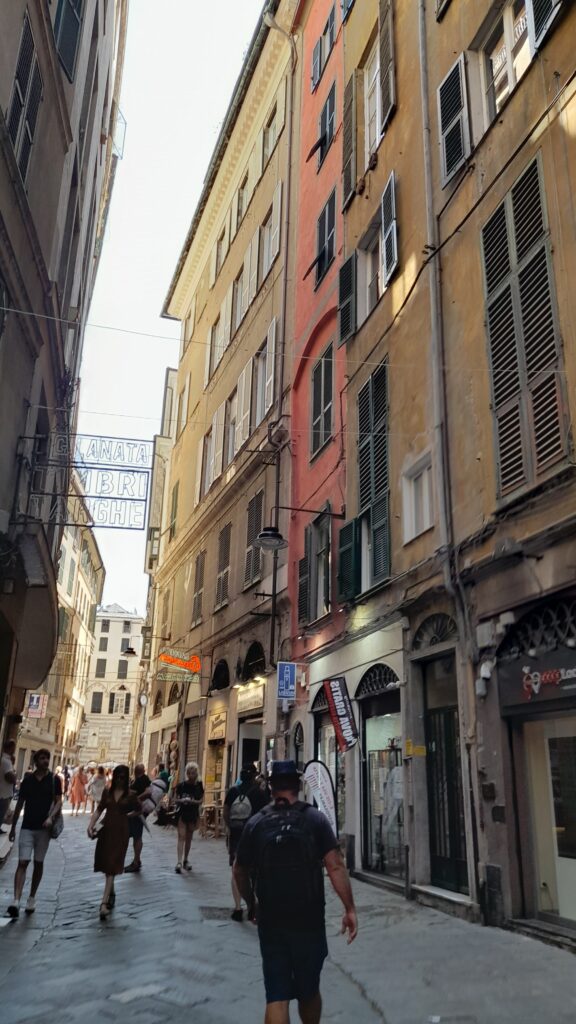

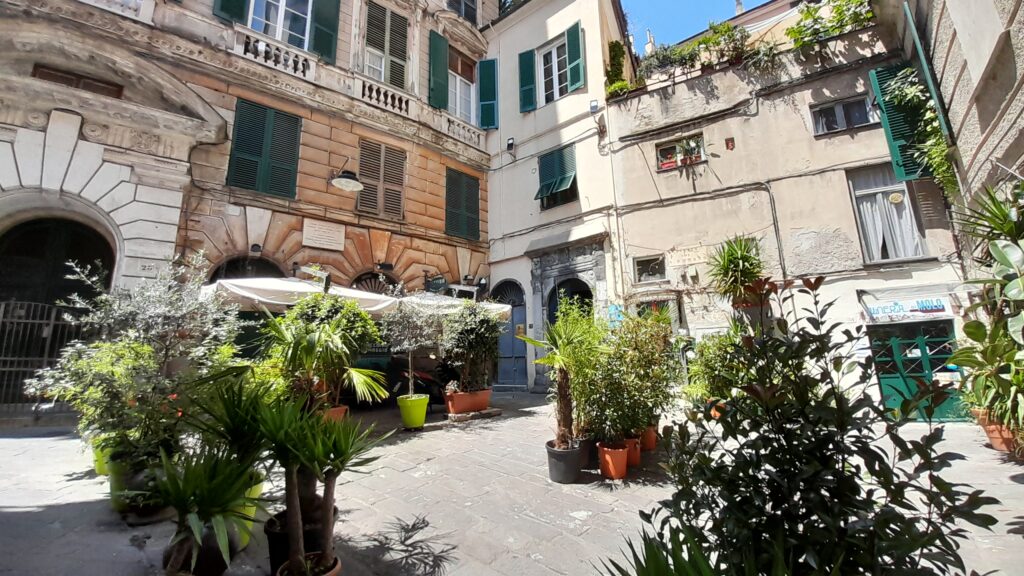

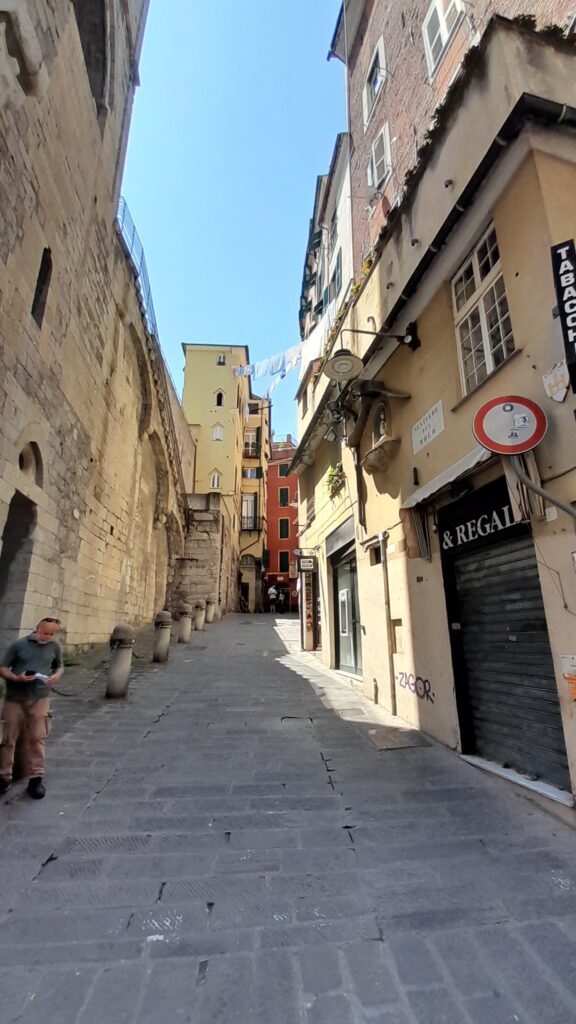

Porto Antico
Porto Antico, the old port of Genoa, has undergone significant revitalization in recent years. This waterfront area is now a busy hub of activity, featuring attractions such as the Aquarium of Genoa, the Bigo panoramic lift, and the Biosphere. Porto Antico also boasts a marina, where visitors can admire luxury yachts and enjoy waterfront dining.
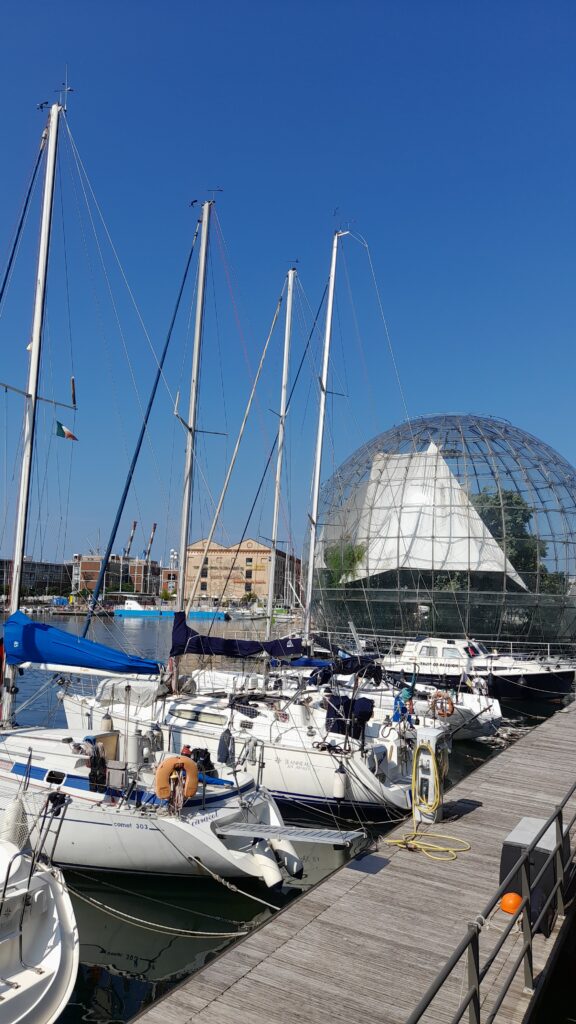

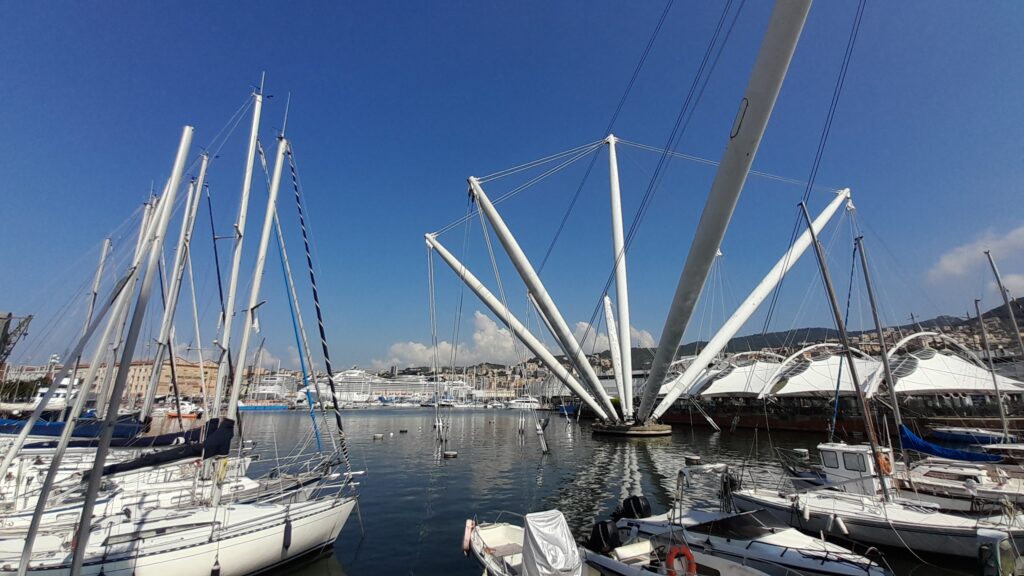

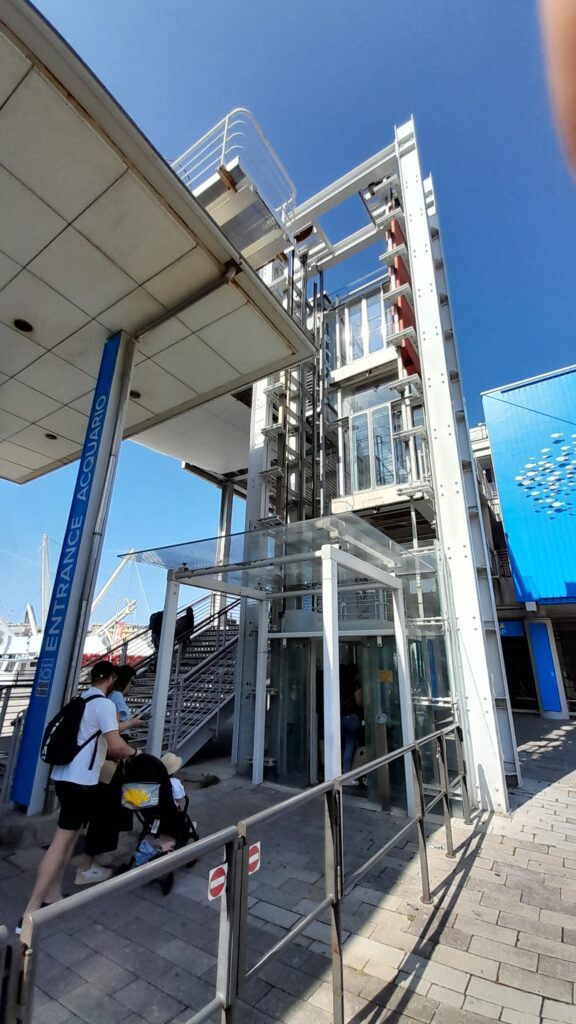

For more info read my article: Exploring Genoa’s Historic Port
Boccadasse
Boccadasse is a picturesque seaside neighborhood located just a short distance from Genoa’s city center. Its colorful houses, charming beach, and small fishing boats create a postcard-perfect scene. Boccadasse is an ideal spot to relax, enjoy a gelato, and soak up the coastal atmosphere.
Spend the night in Genoa
Booking.comPeople also read:
Conclusion
Genoa’s historical city center is a captivating destination that offers a journey through time. From its ancient origins and maritime republic to its Renaissance splendor, the city’s rich history is evident in its architectural wonders and cultural heritage. Exploring the narrow alleys of the caruggi, visiting iconic landmarks, and savoring culinary delights, Genoa remains a vibrant and enchanting destination that effortlessly blends its historical past with modernity.
FAQ
This article may contain affiliate links. This means that we receive a small commission when you book something via these links. Of course, this does not cost you anything extra. Did our tips help you? We would love it if you book your trip via the links in the article above. Thank you so much.
Read more articles on my Genoa page.